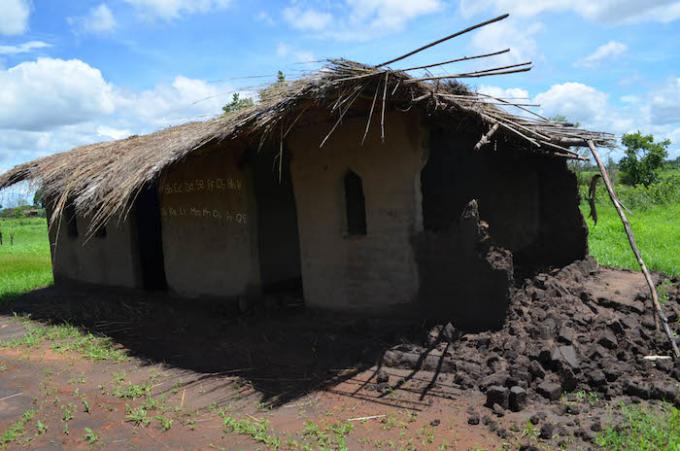The Plight of the Floods on Early Childhood Care
The nation of Malawi, through several avenues and stakeholders continue to harness integrated recovery means for the survival of Malawians who have been affected by the recent devastating floods. According to government records, 230,000 people have been displaced in 15 of Malawi’s 28 districts. Zomba is among the country’s districts that were affected. Wreaking havoc – the scale of the disaster has seen villages run-down, crops swept away and livestock drowned.
In Zomba District, communities in which Save the Children implements its Early Childhood and Development (ECD) programmes continue to bear the brunt of the devastating rains. As a result, child centered community programmes and the homes of community volunteers who keep them running have been dilapidated – causing disruption to ECD programming.
For ECD, community involvement sits at the hub of its strategic priorities, but with the recent disaster having affected as many as 726 volunteer households – priorities have had to shift from their selflessness in running children’s programmes to setting precedence on their own survival. Just like other affected households, community volunteers have to attend to rehabilitating their homes and fending for their own children. As these volunteers justifiably recover, their absence will be felt in areas of community development such as Community Based Childcare Centre’s (CBCCs), parenting sessions and the facilitation of Children’s Corners – showing that this opportunity cost is one of great priority in the flood response.

Photo Caption: Impact of the floods on Ndokoto CBCC, Zomba District
The recent floods have affected a majority of the CBCC structures. As a whole, there are 235 CBCCs in Save the Children’s ECD implementing zones, 35 of which are cement structures built with the organisations support. The remaining 200 are semi-permanent structures that are for the most part made of mud walls and thatched roofs. Of the semi-permanent CBCCs, 137 of them along with a majority of their detached toilets have been badly affected, some entirely, others partially. The ruined structures have made it unsafe for children to learn and have raised concerns about the toilets in regards to Water, Sanitation and Hygiene (WASH).
CBCCs play a vital role in the implementation of ECD programmes – almost all CBCC activities, community led meetings, Children’s Corner sessions, growth monitoring and screening and parenting sessions take place in CBCC structures. As a result of this sudden impact of the floods, community programmes have had to resort to temporary solutions. There are reports that groups are meeting in churches, conducting lessons under trees or pretty much any random place they can find shelter. Since being affected, 199 CBCCs have reopened, resorting to some of these makeshift solutions. Undoubtedly, this has greatly affected the attendance rate of children at many CBCCs that are already facing accessibility challenges due to poor road conditions.
Save the Children’s ECD team has been as flexible as possible in responding to the disaster at hand. On 14th January 2015, the team conducted a mapping exercise in the impact area of Traditional Authority Chikowi (TA), Sub TA Ntholowa and TA M’Biza. At the time there were 2 camps, one at Chikomwe Primay School, which was accommodating 970 households with 583 children of whom 210 were under-five and the other camp at Kasimu Primary School accommodating 586 households with 326 children of whom 138 were under-five. It was reported that the children in the camps had last taken a meal 2 days prior. In response, Save the Children provided the camps with a tonne of VitaMeal for under-five children. In addition, Save the Children provided support to families by opening several of its permanent CBCC structures for shelter.
As families slowly return home from temporary shelters and camps, there is hope for more stabilisation as development agencies and the government continue to support the communities’ survival. A majority of CBCCs are receiving health and sanitation support from the national health cluster response who through the government and partner agencies are distributing chlorine for disinfection and conducting hygiene and sanitation sensitisation meetings.
Written by Akuziki Ghambi, ECCD Facilitator
This story was also featured in Malawi’s, The Nation Newspaper on 29th April 2015 as part of an overview of Save the Children’s Humanitarian Response between the months of January and April 2015. Click the following like to access it:-
http://www.scribd.com/doc/263517264/Save-the-Children-Pullout-Online
 Malawi
Malawi